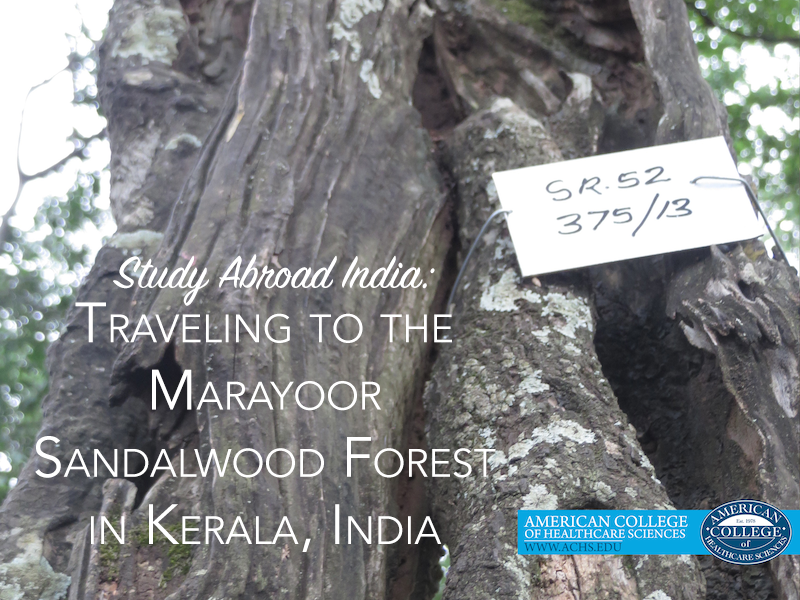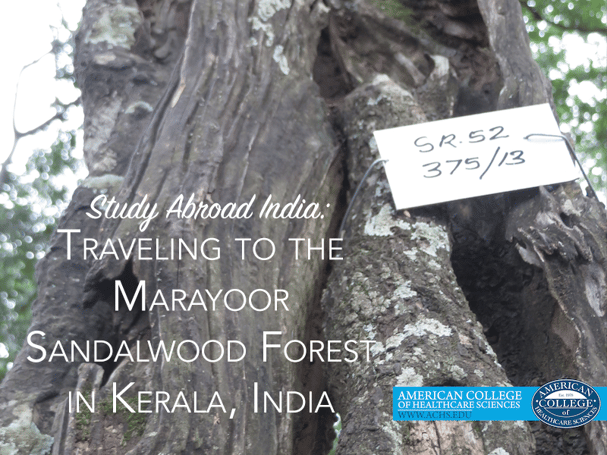
We settle into giddy, tense bursts of laughter as our driver, Thomas, slowly traverses the 27 hairpin turns leading into Munnar. We make jokes about being saved from Bengal Tigers as the next curve reveals a thick banyan tree with roots strong enough for Tarzan to swing from. Next turn, a bus shimmies forward and back to make the nearly 180 degree turn. Then we get a glimpse revealing the vast canyon we are climbing. And we are far gone at this point, embellishing the tall tale we will tell everyone later—one that would make a fisherman proud.
While this part of the journey is a bit harrowing, the “prize” at the end makes it worth the price of admission. Munnar, set way up in the hills of the Western Ghats (an Indian word for mountain range), is breathtaking.
It’s no wonder British resident John Daniel Munro, in the 1870s, was entranced! He was very interested in plantations, and found the Kanan Devan hills to have the highest potential for crops.
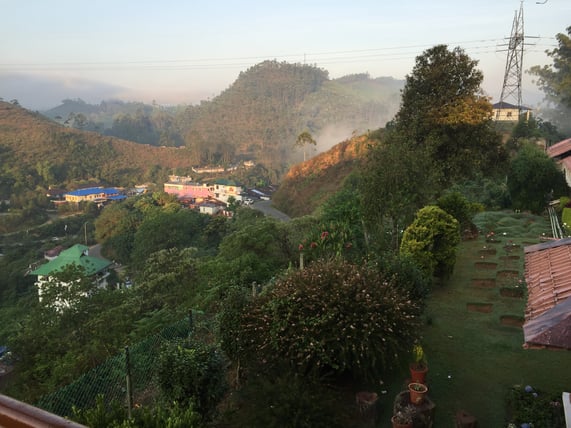
The land was bought and sold a few times under British rule, but it wasn’t until 1964 that ownership of the tea plantations began being transferred back to the people of India. The transfer was completed in 1976, and Tata tea is one of the largest companies.[1]
You can read more about these historical beginnings and the history of Tata Tea here.
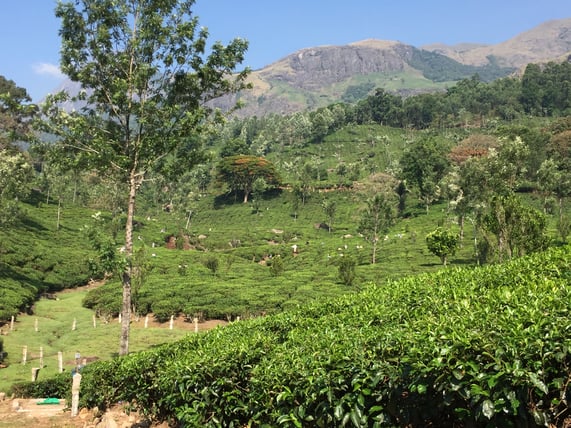
These vast plantations form impressive hillsides, patchworks of hundreds of green bushes dotted with small groups of women working the fields. I hate to think about the pittance they must be paid to do this arduous work. The women pluck specific three-leaf pieces off of each bush and put them in large sack-shaped bags. They carry these bags out on their heads, secured by a band around the forehead, and let the sacks rest against their backs. There are no vehicles in these fields. Everything is done on foot. We catch glimpses of bands of colorful workers every now and then as we continue to snake through the green jigsaw-puzzled landscape. We see the women tea pluckers later taking a tea and water break on the side of the road.
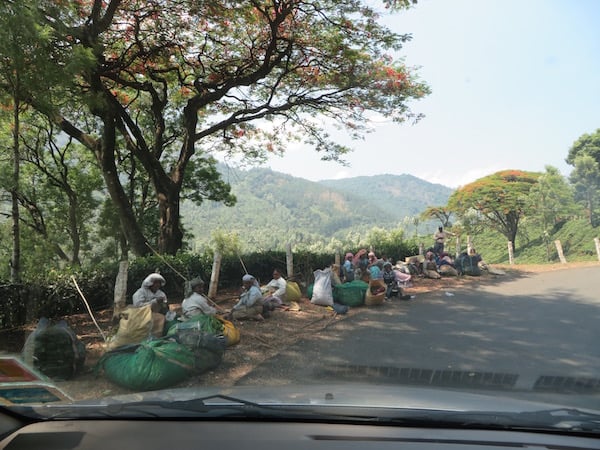
What is not impressive, however, are the pesticides being sprayed on the crops. We must resort to rolling up the car windows as we pass workers spraying from hand-held containers with no gloves and no masks. My travel companion, Dorene, is diligent in preaching the gospel of organic. She takes every opportunity to challenge the status quo and educate on the importance of clean food, free from pesticides. However, in this instance, all we can do is roll up the windows, and hope that the effects of these toxic chemicals will be minimal on these innocent workers…and we re-commit to drinking only organic tea!
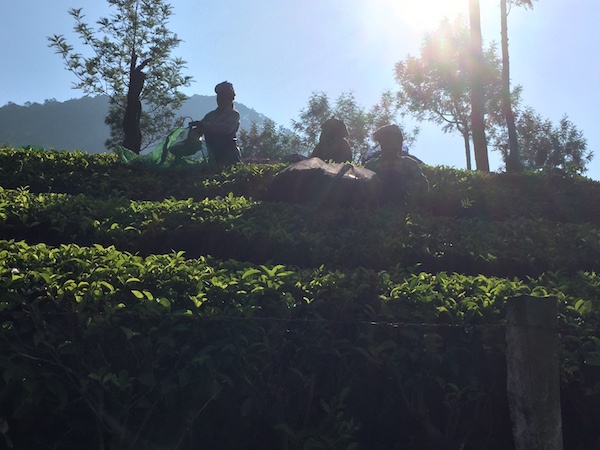
As we move beyond the tea plantations and head up to the Marayoor sandalwood forest, the landscape reverts back to the lush forest to which we have become accustomed.

It invokes the feeling of being in an Indiana Jones movie, complete with monkeys and elephants. Small, dusty, one-road villages are dotted with women in colorful saris and men in white shirts. How they keep their clothes so clean, I’ll never know.
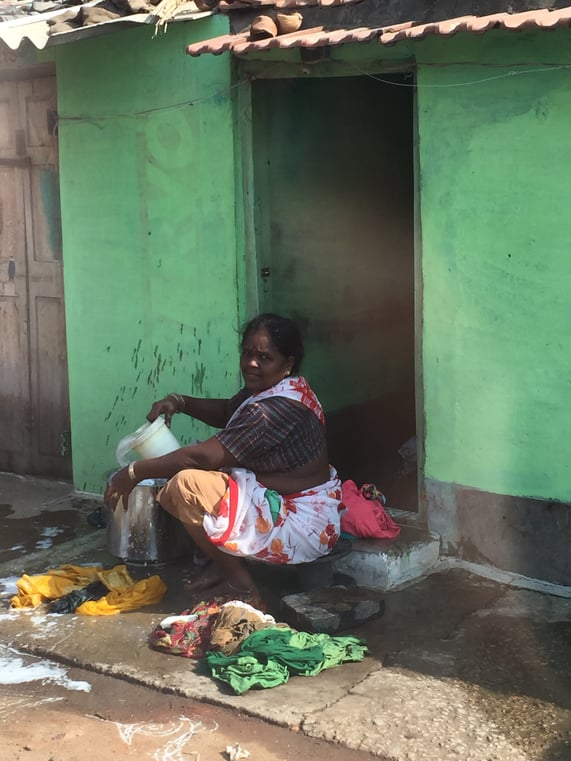
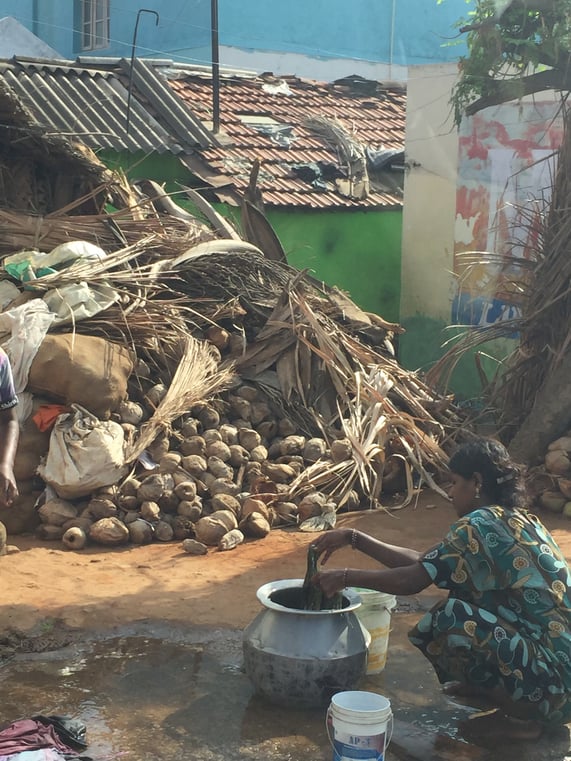
We continued to climb, surprised often by a gorgeous Royal Poinciana tree (Delonix regia (Bojer) Raf), called Gulmohar in India, which blooms a fire engine red. Dorene gasps every time a curve reveals this shock of red against the lush green palate … and we stop for yet another picture.
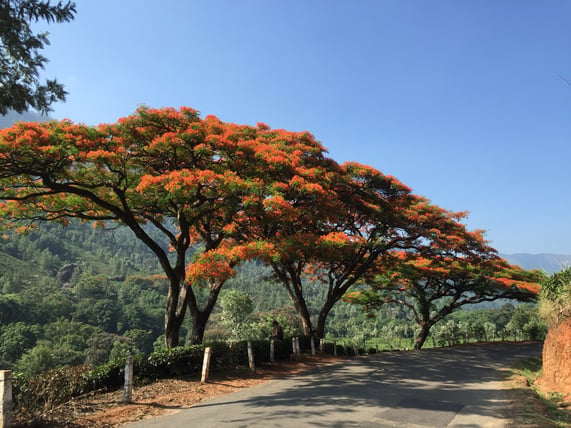
We know we’ve entered the regenerating sandalwood forest when we see the chain link with barbwire fence and the “Keep Out” signs surrounding the precious trees. Sandalwood is the name of a class of woods from trees in the genus Santalum. In India, the variety is Santalum album (L.) the source of the precious Mysore Indian sandalwood oil.
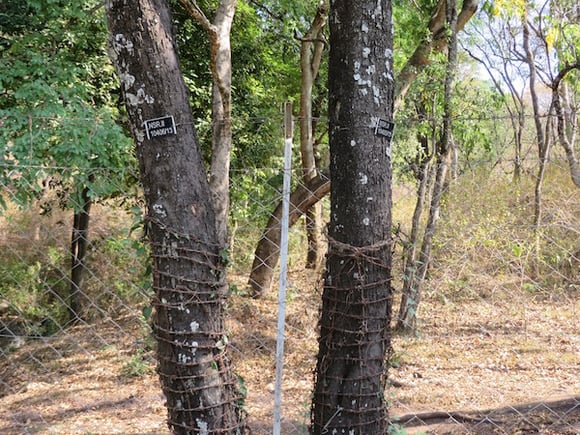
It is a threatened species on the IUCN Red List and grows in the Western Ghats. The priceless heartwood and stumps are harvested for temple carvings or are used to produce the essential oil.
Sandalwood is a very slow-growing tree. Only the very center of the trunk known as the heartwood and the root stump contain the volatile molecules that produce the fragrant essential oil when steam distilled. The tree must be at least 15 years old or even older before it’s ready to be harvested and the whole tree is sacrificed.
The precious sandalwood oil, which has risen in price over the years to a current average of $2,000 U.S. per kilo (based on Ultra International B.V., Spring 2015 Market Report), is a pretty enticing incentive to wait.
Unfortunately, the oil also attracts those seeking to profit illegally from these endangered trees. There are actually sandalwood smuggling “kingpins” and whole branches of organized crime in India dedicated to this lucrative poaching. Our driver, Thomas, regales us with stories about a sandalwood smuggler who, some 15 years ago, had a compound set back in the forest. He was viewed as a local hero of sorts, although he was eventually killed. We see now why these individually numbered trees are behind a high chain linked barbwire fence and closely monitored and protected.
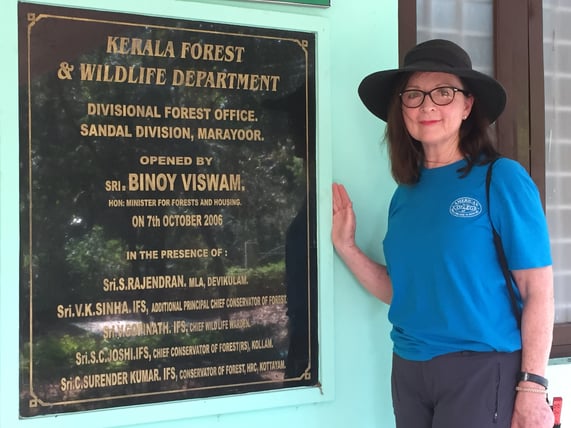
Last year, in 2015, the forest department decided to put into practice the concept of “keeping your enemies close” by employing convicted smugglers as forest guards. The New Indian Express explains that about a dozen watchers have been employed to help the Forest Department keep an eye on poachers: “The watchers have not much to do, except keeping an eye on the poachers, for which they get about RS15,000 per month. This is a guaranteed income for them, unlike poaching, which could bring them jail term if caught.”[2]
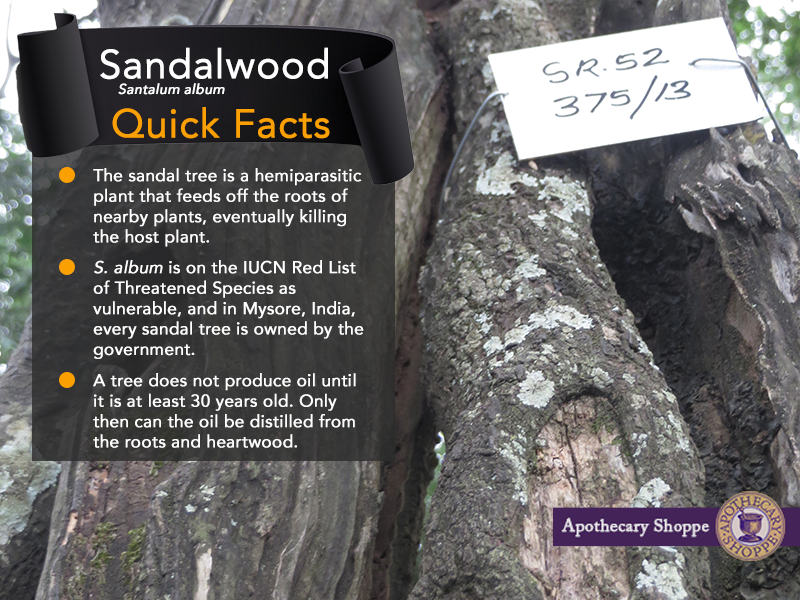
On the same fenced property as the sandalwood forest is a factory owned by the government. While the factory is not currently in operation (and we weren’t able to take a look inside), there is hope on the horizon. For the past five years, private farmers have taken a renewed interest in cultivating this very lucrative crop with the Institute of Wood Science and Technology (IWST), Bengaluru, a pioneering institute for sandalwood research leading the way. Let’s hope this will help revive the country’s lost glory in the sandalwood trade.[3]
Seeing these beautiful trees in person is such an awe-inspiring experience and we feel a tremendous reverence for them and the beautiful aromatic oil they provide. Here is a video of Dorene greeting our May 2016 ACHS students in front of the Sandalwood forest.
You, too, have the opportunity to see these majestic trees in person. Travel with us and visit the Marayoor regenerating sandalwood forest during our 2017 ACHS study abroad program Silk, Spice, and Sandalwood. For more information …Disclosure of Material Connection: I am the Community Programs & Events Manager
at American College of Healthcare Sciences, the Institution that publishes this blog. However, all opinions are our own. If this blog contains affiliate links, they will be marked with an asterisk. I am disclosing this in accordance with the Federal Trade Commission’s 16 CFR, Part 255: “Guides Concerning the Use of Endorsements and Testimonials in Advertising.”
This article is for informational purposes only. It is not intended to treat, diagnose, cure, or prevent disease. This article has not been reviewed by the FDA. Always consult with your primary care physician or naturopathic doctor before making any significant changes to your health and wellness routine.
References
[1] ReferenceforBusiness.com. (n.d.). Tata Tea Ltd. - Company Profile, Information, Business Description, History, Background Information on Tata Tea Ltd. [Online]. Retrieved from http://www.referenceforbusiness.com/history2/94/Tata-Tea-Ltd.html
[2] Jayasankar, P.B. (2015, March 23). Ex-poachers Turn Saviours of Sandalwood Forest in Marayoor Area. New Indian Express. [Online]. Retrieved from http://www.newindianexpress.com/states/kerala/Ex-poachers-Turn-Saviours-of-Sandalwood-Forest-in-Marayoor-Area/2015/03/23/article2726055.ece://www.newindianexpress.com/states/kerala/Ex-poachers-Turn-Saviours-of-Sandalwood-Forest-in-Marayoor-Area/2015/03/23/article2726055.ece
[3] Pahlavi, A. (2015, February 28). Return of scented wood. Down to Earth. [Online] Retrieved from http://www.downtoearth.org.in/coverage/return-of-scented-wood-48569://www.downtoearth.org.in/coverage/return-of-scented-wood-48569

